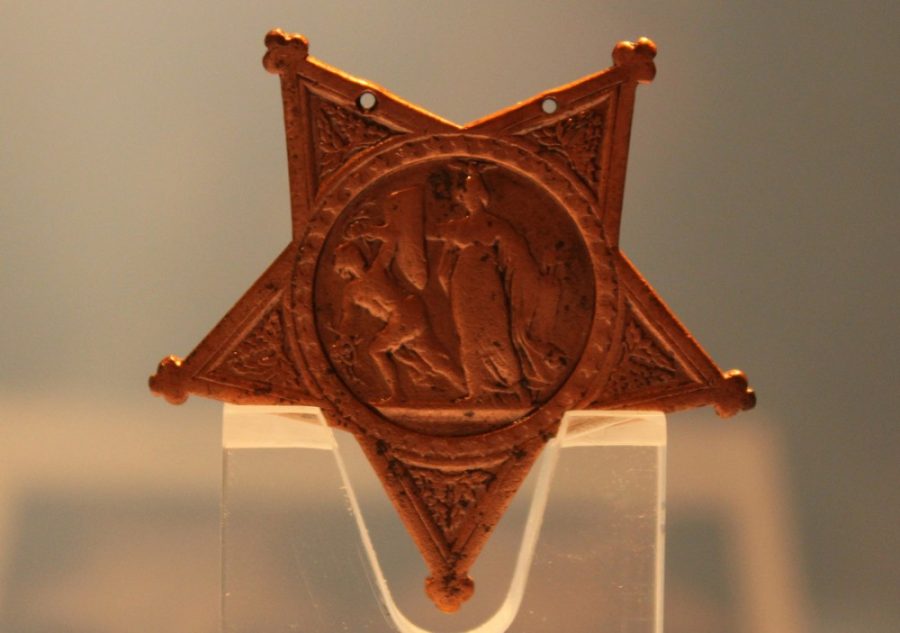A man steps out, his booming voice made small by the distance of a modest audience from a low stage. The man is Larry Herndon, the chief of history for the 355th Fighter Wing at Davis-Monthan Air Force Base. He speaks at the The Arizona History Museum’s opening reception for the “Above and Beyond: Arizona and the Medal of Honor” exhibit Nov. 10.
The exhibit, which runs until May 7, features five Medals of Honor earned by military service members in campaigns abroad, according to the Arizona Historical Society’s press release for the exhibit.
At the exhibit, viewers will find the medals, an actual letter written on a typewriter by former President Theodore Roosevelt with handwritten line edits, a wide array of military hats — my personal favorite of the components — and stories of those who have earned medals throughout the lifespan of its current inception.
According to the Arizona Historical Society’s press release, displaying these medals appeals to more than just aesthetics.
“One of these [medals], incredibly, was buried under a layer of dirt and discovered by chance by Dwain Oliver, a modern day ‘history saver’ with his metal detector,” the Arizona Historical Society wrote. “The story of its recipient remains almost completely unknown.”
The design of the U.S. Army variation has not been altered since the production of the George Lewis Gillespie, Jr. model, which depicts the Roman goddess Minerva in the center. This model has been in commission since World War I and is the one you’re most likely to see on an awarded veteran or in an exhibit such as this.
“I have always felt that it is important to understand your history because it is important towards your actions in the future,” said Mary Shannon, a UA microbiology sophomore.
As a student whose family has an extensive history of involvement in the military, Shannon said she feels a certain “familial pride” in seeing exhibits such as these, adding a certain layer of depth for students who have veterans in their bloodlines.
“Some of my relatives have been awarded these very medals,” she said.
Whether you’re a history buff, the child or grandchild of a veteran, or just someone who happened to be in the general area and wanted to see something out of the ordinary, this exhibit is a fun sight to see.
Admission for adults is $8, but students with school ID pay a reduced cost of $5.
Further information on admission prices and hours can be found at azmoh.org.
Follow Sasha Hawkins on Twitter.









